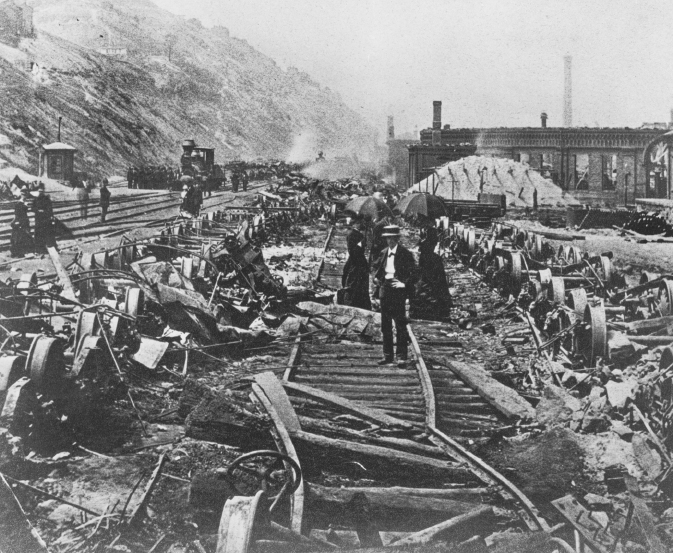Why did the fortunes of the Knights of Labor rise in the late 1870s and decline in the 1890s?
Printed Page 561

CHRONOLOGY
1869
- –Knights of Labor is founded.
1873
- –Panic on Wall Street touches off a depression.
1877
- –Great Railroad Strike.
1886
- –American Federation of Labor (AFL) is founded.
- –Haymarket bombing.
BY THE LATE NINETEENTH CENTURY, industrial workers were losing ground in the workplace. In the fierce competition to reduce prices and cut costs, industrialists invested heavily in new machinery that replaced skilled workers with unskilled labor. The erosion of skills and the redefinition of labor as mere “machine tending” left the worker with a growing sense of individual helplessness that spurred collective action. The 1870s and 1880s witnessed the emergence of two labor unions — the Knights of Labor and the American Federation of Labor. In 1877, in the midst of a depression, labor flexed its muscle in the Great Railroad Strike. But unionism would suffer a major setback after the mysterious Haymarket bombing in 1886.